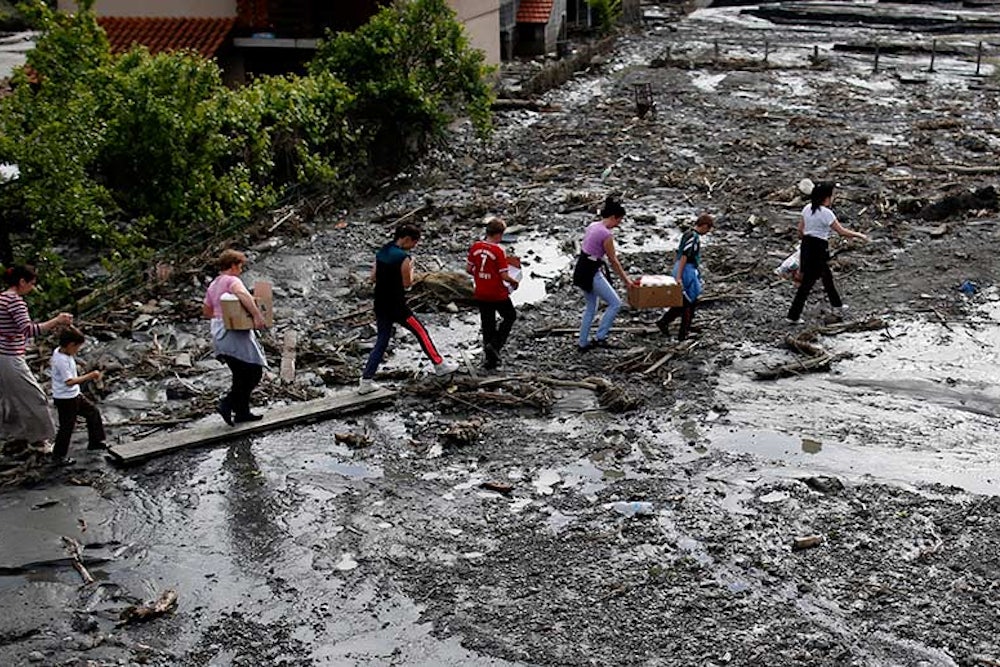It has been a year—already!—of floods in Europe. England had the rainiest winter since records began, in 1766. All the newspapers there featured images from the west of the country where fields had turned into serenely shining lakes and streets into canals. Where usually people walked or drove, now they could only travel by canoe or dinghy. Road signs that had offered directions became stranded indicators of depth. So although this is a picture of a flood and landslide in Topcic Polje, Bosnia and Herzegovina, it seems representative of the generally sodden condition of large swathes of Europe. But it might also be a representative picture in the way that it poses two related questions.

First: Has the daily deluge of images achieved such record-breaking levels—has the image-flood reached such depths—that almost every photograph now inevitably reminds us of other photographs? We can put it the other way round: How rare it is when a picture does not do this, how unusual to come across an image and think, “Wow, I’ve never seen anything like that before!” The irony is that this sense of incessant repetition and recollection—of what, in submarine films, the sonar operators called “continuous echo”—is most pronounced in news photographs.
Specifically, this news picture recalls several old images of soldiers making their way across the muddy desolation of World War I battlefields. More specifically still, it’s reminiscent of a famous photograph by Frank Hurley from Passchendaele, in 1917, of soldiers hiking across duckboards that serve as a kind of bridge through a swamp of ruined nature. In Hurley’s eerily serene picture, the troops are heading toward us, moving deeper into the beckoning twentieth century. Almost a hundred years later, in this image, soldiers have become civilians and the devastation in which they find themselves is natural rather than military—though still, in all probability, man-made. And while Hurley’s figures appear almost to be strolling—did he ask them to pause and pose?—these brightly dressed citizens are striding briskly away from us as if conscious that their moment in the limelight of the world’s sympathy will be fleeting, that other victims of more terrible events will push their plight to the unnoticed margins of our attention.
The second question in some ways grows directly out of the first. To what extent will World War I form the daily backdrop of whatever happens during the four years of its hundredth anniversary? If this picture is anything to go by, it will not be content to remain in the background but will push itself constantly to the fore. In the distance, to the left and—albeit only glimpsed—to the right are the fairly lush greens of trees. But these banks of color are separated by a surge of black and white, a slurry of gray ruin. It is as if the ravaged photographic landscape of the Western Front has come pouring through the middle of the picture, obliterating the present, swamping it, submerging it beneath the quagmire of history.
